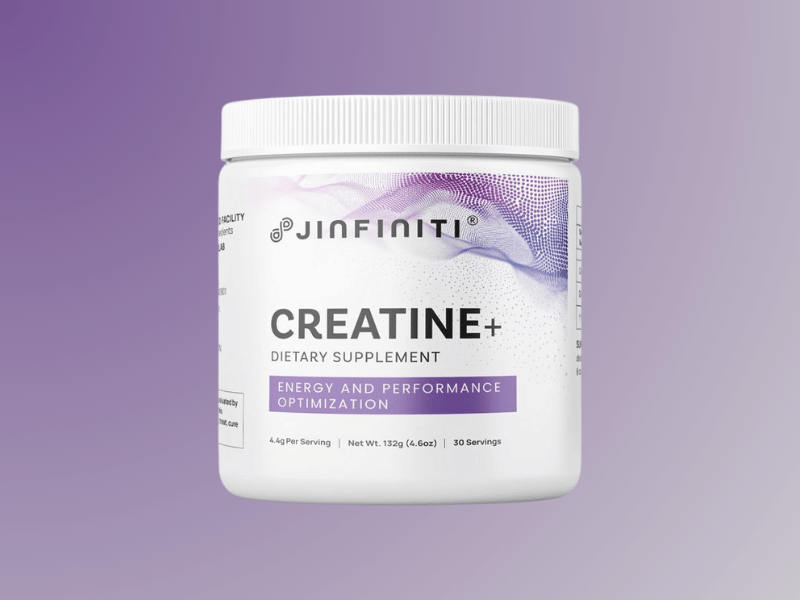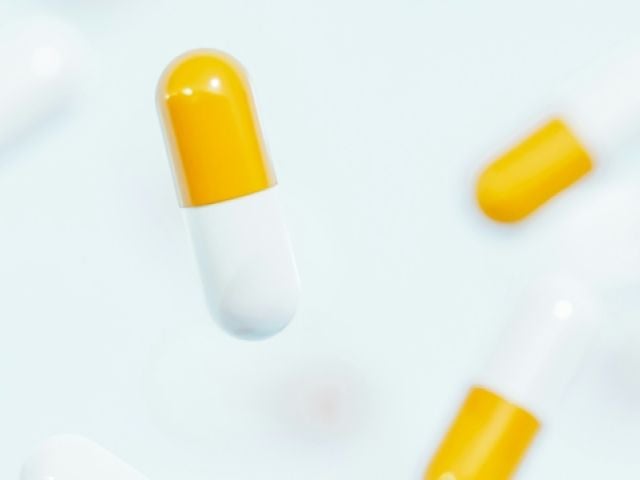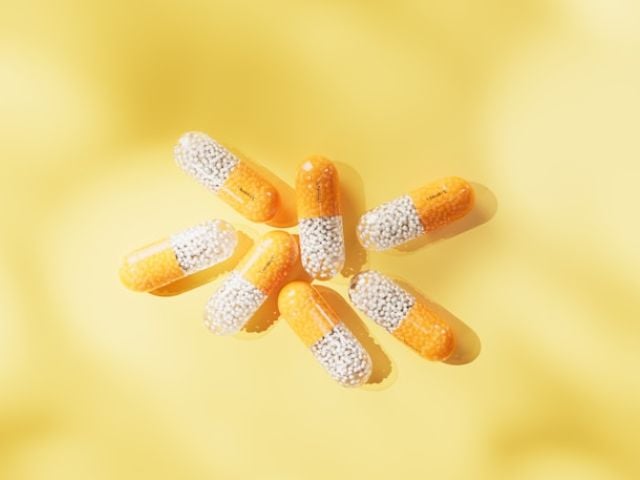
Are Creatine Gummies as Effective as Powder?
Creatine gummies have exploded in popularity as a convenient alternative to traditional powder. But here’s the question affecting millions of users: do they actually work?
The answer is more complicated than supplement companies want you to believe. Both forms contain the same active ingredient, creatine monohydrate. But manufacturing challenges and stability issues create real differences in what you’re getting.
Key Takeaways
- Creatine gummies and powder have similar bioavailability when the creatine molecule stays intact, but gummies face major stability problems during manufacturing.
- Independent testing reveals that 40 to 50 percent of creatine gummy products contain far less creatine than claimed, with some having none at all.
- Creatine powder costs about eight times less than gummies and has decades of research backing, making it the smarter choice for most people.
- If you choose gummies, look for a gritty texture (not clear and smooth) and demand third party testing results from the manufacturer.
Creatine Gummies vs Powder: How Each Form Works
Creatine gummies and powder show similar bioavailability when the creatine molecule stays intact. Research confirms that creatine monohydrate absorbs nearly 100% when you take it properly, no matter the format1.
Your muscles don’t care where creatine comes from. They take up what’s available and convert it to phosphocreatine for energy production.
The absorption process follows the same path for both forms. Creatine must be absorbed through your intestinal wall, transported via the bloodstream, and then taken up by muscle tissue through creatine transporters.
Do Gummies and Powder Have the Same Bioavailability?
When the creatine molecule stays stable, yes. Studies on creatine pharmacokinetics show that the compound itself absorbs equally well from different forms of creatine2.
The problem isn’t how creatine works in your body. It’s whether the creatine survives the manufacturing process and remains stable before you consume it.
Research on creatine stability shows the compound is stable in powder form but breaks down when mixed with liquids or exposed to acidic environments3.
How Your Body Digests Gummies vs Powder
Creatine powder dissolves quickly in your stomach and small intestine for rapid absorption. It gets to work almost right away.
Gummies take a different path. The gel matrix must break down first before creatine becomes available.
Some manufacturers claim this pre-incorporation into a gummy matrix offers advantages. But this benefit becomes meaningless if the manufacturing process degrades the creatine before it reaches you.
Lab-Tested Creatine + ATP
Pure creatine with added ATP for superior muscle gains.

The Manufacturing Problem with Creatine Gummies
Making creatine gummies creates three stability problems that powder avoids: heat exposure, acidic pH, and liquid mixing. These factors can destroy creatine before you even open the bottle.
Food scientist Crystal Webber explains the core issue: “There are three typical factors in the gummy process that tend to degrade creatine: acid, heat and liquid.”
How Heat and Acid Degrade Creatine
Pectin based gummies require heating to 180 to 200°F to activate the gelling process. At these temperatures, creatine begins converting to creatinine, its inactive metabolite.
Studies show that if the boiling process lasts 10 to 15 minutes, about half the creatine may degrade before the gummies even solidify4.
The situation gets worse when citric acid enters the equation. Nearly every creatine gummy contains citric acid for flavor and preservation, which maintains a low pH environment where creatine is notoriously unstable.
Research on creatine stability shows that in acidic solutions at room temperature, 60% degradation can occur within 28 days.
For gummies sitting on shelves for six months or more, the creatine content could fall from a claimed 5 grams to under 3 grams.
What Independent Testing Reveals
In 2024, NOW Foods conducted independent testing of 12 popular creatine gummy brands using high performance liquid chromatography. The results were alarming.
Five of the twelve products contained little to no creatine. All five failing products displayed large amounts of creatinine, the breakdown product that signals creatine degradation.
Katie Banaszewski, NOW’s Senior Director of Quality, noted: “Due to the nature of gummy manufacturing, there is a possibility that creatine in gummy formulations may have degraded to creatinine during manufacturing.”
The Amazon Gummy Problem
A separate independent test of six popular Amazon creatine gummies found that four contained almost no creatine or none at all. These weren’t obscure brands. These were bestselling products with thousands of positive reviews.
Even more concerning, NOW discovered that third party labs they use lacked validated testing methods for creatine gummies. This testing gap means many gummy manufacturers may not even know their products are failing to deliver the promised creatine content.
How to Spot Low-Quality Gummies
Food scientist Crystal Webber provides a simple visual test you can do at home: creatine gummies should have a gritty, chalky texture that lets you know the creatine molecule is intact.
This grainy texture comes from undissolved creatine crystals suspended in the gummy matrix. While it may seem less appealing, it’s actually a positive sign that the creatine hasn’t fully degraded into the smooth, useless creatinine molecule.
Creatine Gummies vs Powder: What Research Shows
The scientific evidence strongly favors one form of creatine over the other. The research gap between powder and gummies is enormous and tells you everything you need to know.
The Evidence for Creatine Powder
Over 95% of published creatine research has used creatine monohydrate powder. This body of evidence shows that creatine supplementation increases muscle creatine content by 15 to 40%5.
Studies confirm the benefits of creatine for anaerobic exercise capacity and training volume, leading to greater gains in strength and lean body mass.
A 2022 systematic review analyzing creatine supplementation for muscle growth found consistent evidence. Participants gained an average of 0.86 kg more body mass and 0.82 kg more fat free mass compared to placebo groups6.
Recent meta-analyses confirm creatine’s efficacy for improving upper body strength, lower body strength, and muscle hypertrophy across multiple populations7. The most obvious benefits appear in younger males.
Richard B. Kreider, director of the Exercise & Sport Nutrition Laboratory at Texas A&M University and one of the world’s leading creatine researchers, states that “creatine monohydrate continues to be the only source of creatine that has enough evidence to support bioavailability, efficacy, and safety.8“
Why Gummy Research Is Missing
In stark contrast, almost no peer reviewed research exists examining the efficacy of creatine gummies. The few available studies on creatine forms other than monohydrate powder generally conclude that alternatives lack the research needed to support claims.
The International Society of Sports Nutrition explicitly states: “At present, creatine monohydrate is the most studied and clinically effective form of creatine for use in nutritional supplements in terms of muscle uptake and ability to increase high intensity exercise capacity.”
NOW Foods, after conducting their gummy testing program, recommends sticking with traditional creatine monohydrate powder. They state it “remains the best option based on science. It’s the most studied, proven, and cost effective form of creatine available.”
🫙 MORE CREATINE COMPARISONS
- Particle size matters more than you think. Micronized creatine vs monohydrate affects absorption and how your stomach handles it.
- Marketing claims sound great, but does the science hold up? This Kre-Alkalyn vs creatine monohydrate comparison separates fact from fiction.
- Different goals need different supplements. See how creatine vs L-carnitine stack up for strength, endurance, and fat loss.
Comparing Dosage: Gummies or Powder
Getting the right dose of creatine matters for results. The form you choose affects how easy it is to meet your daily needs.
How Much Creatine Do You Need Daily?
Research consistently supports a maintenance dose of 3 to 5 grams of creatine monohydrate per day to sustain elevated muscle creatine stores.
For those seeking faster saturation, a loading phase of 20 to 25 grams daily (divided into 4 to 5 servings) for 5 to 7 days can rapidly maximize muscle stores.
The loading phase is optional. You can achieve the same muscle creatine levels by taking 3 to 5 grams daily. It just takes three to four weeks instead of one week.
With powder, achieving these doses is straightforward. One scoop delivers 5 grams of pure creatine monohydrate.
Meeting Your Dose with Each Form
Most creatine gummies contain 1.5 to 3 grams of creatine per serving. You’ll need multiple gummies to reach the recommended daily dose.
A typical brand might require 3 to 4 gummies to deliver 5 grams of creatine. That’s assuming the label claims are accurate, which testing reveals they often aren’t.
For individuals weighing over 200 pounds who may benefit from 5 to 10 grams daily, this could mean consuming 6 to 8 gummies per day.
Each gummy brings not just creatine, but also sugar, sweeteners, and added calories that may not align with your dietary goals.
The table below compares typical dosing for each form:
| Factor | Creatine Powder | Creatine Gummies |
|---|---|---|
| Amount of creatine per serving | 5 grams | 1.5 to 3 grams |
| Servings needed for 5g dose | 1 scoop | 3 to 4 gummies |
| Servings for loading phase (25g) | 5 scoops | 15 to 20 gummies |
| Added ingredients | Minimal | Sugar, acids, gelling agents |
Creatine Gummies vs Powder: Cost Comparison
Price differences between these forms add up fast. Over a year, the cost gap becomes huge.
Creatine powder ranks among the most affordable supplements you can buy. It ranges from $0.20 to $0.80 per 5 gram serving. A year’s supply of quality creatine monohydrate powder costs about $73 to $292.
Creatine gummies command a big premium. Popular brands cost around $1.50 to $2.00 per serving in the United States. Over a year, this translates to $547 to $730 in supplementation costs.
That’s roughly eight times more expensive than powder. The price premium becomes a real problem when you consider the stability issues.
If you’re paying eight times more for a product that testing shows may contain little to no active ingredient, you’re buying expensive candy.
Sugar Content and Added Ingredients in Gummies
Creatine gummies contain many more ingredients beyond creatine monohydrate. These extras may conflict with your health goals.
Common additions include:
- Sugars: 2 to 5 grams per serving of sucrose or glucose syrup, which provides calories and may cause blood sugar spikes
- Sugar alcohols: Sorbitol or maltitol in “sugar free” versions, which can cause digestive distress including gas, bloating, and laxative effects
- Gelatin or pectin: Animal derived or plant based gelling agents
- Citric acid: For flavor and preservation, but problematic for creatine stability
- Artificial flavors and colors: To make the product taste better and look appealing
- Carnauba wax: For coating and preventing sticking
For individuals with diabetes or insulin resistance, the sugar content becomes a concern. The simple carbohydrates can cause rapid blood sugar spikes requiring careful management.
While some argue that consuming creatine with simple carbohydrates may boost muscle uptake through insulin response, you would need to consume over 100 grams of carbohydrates to see any meaningful benefit. That’s far more than a few gummies provide.
Proper hydration matters more than sugar intake when taking creatine, regardless of which form you choose.
Do Creatine Gummies Work? Common Questions
You probably have questions about which form delivers better results. Let’s address the most common concerns.
Which Creatine Supplement Builds Muscle Faster?
Neither form builds muscle faster when the creatine content is equivalent and stable. The effects of creatine supplementation on muscle growth come from the creatine molecule itself, not the delivery format.
The problem is that gummies often don’t contain their claimed creatine content. If a gummy has degraded to 50% of its label claim, you’re only getting half the dose you think you’re taking.
Powder gives you predictable, stable dosing every time. That consistency matters for building muscle creatine stores over time.
Can Vegetarians Use Either Form?
Yes, but vegetarians and vegans may see even more results from creatine supplementation. Since creatine occurs naturally in meat and fish, vegetarians have lower baseline creatine stores.
This makes them particularly responsive to supplementation. Research suggests these populations may experience more obvious benefits compared to meat eaters.
Pure creatine monohydrate powder is vegan friendly when it contains no animal derived ingredients. Check the label to confirm. Some gummies use gelatin, which comes from animal sources, making them unsuitable for vegetarians and vegans.
Women and older adults can also benefit from creatine supplementation, with emerging research showing positive effects on muscle maintenance and cognitive function.
Do You Need to Cycle Creatine?
No. Early recommendations suggested cycling creatine (taking it for 2 to 3 months, then stopping) due to safety concerns. Research has shown this is unnecessary.
Despite common myths, you can take creatine consistently without reduced effectiveness or safety issues. Since the benefits depend on maintaining elevated muscle stores, consistent creatine intake makes more sense.
Studies of up to five years show no adverse effects from continuous use at recommended doses.
Pros and Cons: Creatine Gummies and Powder
Let’s break down the advantages and disadvantages of each form to help you make an informed choice.
Creatine Powder Advantages:
- ✅ Eight times more cost effective than gummies
- ✅ Backed by decades of research and hundreds of studies
- ✅ Stable in dry form with no degradation concerns
- ✅ Easy to adjust your creatine intake based on body weight and goals
- ✅ No added sugars, sweeteners, or unnecessary ingredients
- ✅ Suitable for those following various diets when choosing pure monohydrate
Creatine Powder Disadvantages:
- ❌ Some people dislike the texture when mixed with liquid
- ❌ Requires mixing with water or another beverage
- ❌ Less convenient for on the go use
- ❌ May have slight grittiness if not fully dissolved
Creatine Gummy Advantages:
- ✅ Convenient and portable for travel or busy schedules
- ✅ Pleasant taste makes them easy to take consistently
- ✅ No mixing required
- ✅ May appeal to those who struggle with pills or powder
Creatine Gummy Disadvantages:
- ❌ Eight times more expensive per serving
- ❌ Minimal research on effectiveness
- ❌ High risk of degradation during manufacturing (40 to 50% of products tested had little to no creatine)
- ❌ Contains added sugars, acids, and other ingredients
- ❌ Requires multiple gummies to reach optimal dose
- ❌ Ongoing degradation during storage reduces potency over time
- ❌ Difficult to verify actual creatine content without lab testing
The Bottom Line
Creatine gummies can theoretically match powder’s effectiveness. The creatine molecule functions identically once it reaches your muscles, and bioavailability is comparable when the compound remains stable.
But theory and practice tell different stories. Manufacturing challenges mean gummies frequently contain far less creatine than claimed. Testing shows 40 to 50 percent of products have degraded or absent active ingredients. Even when gummies start with adequate creatine levels, they continue degrading on the shelf.
The evidence overwhelmingly supports creatine monohydrate powder as the smart choice. It costs eight times less, has decades of research backing, offers guaranteed stability, and provides precise dosing. For 95% of users, powder is the best option.
If you decide on gummies despite these concerns, verify the gritty texture that indicates intact creatine. Demand recent third party testing results from the manufacturer. And prepare to pay a premium for convenience, assuming the product actually contains what it claims.
Referenced Sources
- https://pmc.ncbi.nlm.nih.gov/articles/PMC11966180/ ↩︎
- https://pmc.ncbi.nlm.nih.gov/articles/PMC8912867/ ↩︎
- https://www.sciencedirect.com/science/article/abs/pii/S0149763412000553 ↩︎
- https://www.tandfonline.com/doi/full/10.1186/1550-2783-8-S1-P25 ↩︎
- https://link.springer.com/article/10.1007/s00726-011-0874-6 ↩︎
- https://www.tandfonline.com/doi/full/10.1080/15502783.2024.2380058 ↩︎
- https://www.mdpi.com/2072-6643/16/21/3665 ↩︎
- https://www.mdpi.com/2072-6643/14/5/1035 ↩︎

Get weekly health insights and exclusive offers by joining our newsletter.










